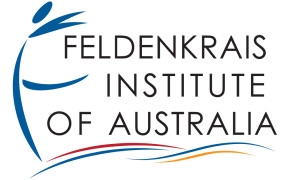Stephanie Spink – Wising up to pain
 Stephanie Spink knows about pain – musculoskeletal pain, chronic pain, psychological pain – and the pain of letting go. Among those who refer to her busy Melbourne-based practice are GPs, neurologists, rheumatologists, and psychologists. “There is a much broader cross-section of the medical community that has started recognising the benefits of the Feldenkrais Method,” Stephanie says.
Stephanie Spink knows about pain – musculoskeletal pain, chronic pain, psychological pain – and the pain of letting go. Among those who refer to her busy Melbourne-based practice are GPs, neurologists, rheumatologists, and psychologists. “There is a much broader cross-section of the medical community that has started recognising the benefits of the Feldenkrais Method,” Stephanie says.
That’s a far cry from Stephanie’s first encounter with the Method in 1982, when there were no practitioners in Australia. At that time, Stephanie was a young physiotherapist keen to learn more about life and other therapeutic approaches. At 22 and following several injuries, she herself was in pain, which gave her even greater motivation to explore approaches ranging from manual therapies and shiatsu to the Alexander Technique and more. But she couldn’t find anything that really made a difference for her.
Then she happened upon a Frank Wildman Feldenkrais workshop for yoga teachers. “I was six months pregnant, having a lot of difficulty with my own neck and back, and during that weekend was the first time in my life I really had an experience where I thought, wow I can feel this good … this is how I could live. And so from that moment on, I was very intrigued about Feldenkrais both for myself and for the people I worked with.” It was also the first time Stephanie had begun to consider how she was working with clients to the expense of her own comfort and wellbeing.
Stephanie “impatiently” awaited the arrival of the first Melbourne Feldenkrais training in 1987, and these days she is a trainer herself.
Although her private practice specialised in musculoskeletal disorders, she quickly realised that was a “narrow way of perceiving people’s difficulties”. “One of the reasons that the Feldenkrais Method is so effective is because much of people’s symptoms develop from compensatory adjustments they make to cope with the difficulty or problem they’re having. We aren’t taught how our bodies function, and so frequently don’t have the means to help ourselves.”
Over time, she also has met many clients with psychological issues, sometimes combined with physical pain, sometimes not. Most often, they are dealing with the “chronic pain” of anxiety, and how that impacts on their social life or ability to perform.
One of the most important resources Stephanie has to draw on is her own experience. “I’m not frightened of pain – I’ve known it well,” she says. Her work brings her into contact with a range of people on the chronic pain spectrum, with severe to minor issues. “Feldenkrais can be very effective with a large percentage of that spectrum if the person has patience, the motivation and willingness to learn, and the means to change,” Stephanie says.
And although the term “no pain, no gain” may not seem to apply to the Feldenkrais Method, which keeps people within their comfort zone, Stephanie says there is an exception to that rule when it comes to personal growth.
“In terms of self-growth, letting go of our habits is not as easy as we’d like to think it is. Moshe (Feldenkrais) recognised that it took motivation and hard work, but he also knew well the rewards to be gained – the ability to live comfortably and make our own personal choices, not living with the internalized authority of someone else – so that we can know what we do and find the means to do what we want.
“I think growth and self-development are treasures. They hold richness worth seeking.”
